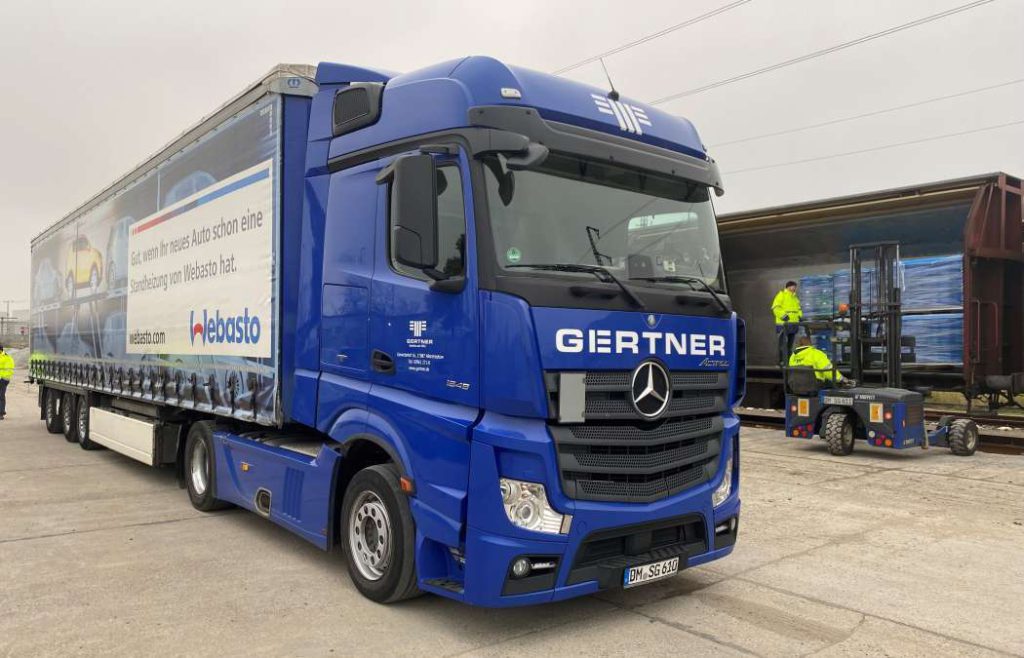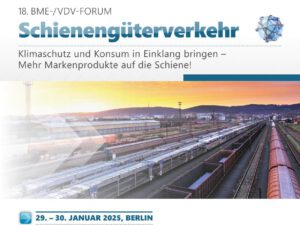“Sustainability is an important criterion for the future design of our service and supply chains,” explains Andreas Dikow, Plant Manager at Webasto Neubrandenburg. “At the same time, the automotive industry in particular requires maximum reliability and economy. Our test run was convincing in all respects. We have therefore decided to expand the project to other partners.” The performance over time was also convincing for the company based in Gauting-Stockdorf. During the test phase, all wagons arrived punctually at the respective loading and unloading stations in Germany and abroad.
Partners in the test project “from road to rail” were DB Cargo Logistics and Spedition Gertner as well as two Webasto suppliers from southern Germany and the Czech Republic. Within six weeks, Webasto sent around 1,400 empty transport containers to be filled and returned. The volumes involved were regular and therefore plannable and large enough for a single wagon. According to the company, around 15 percent of the components purchased reached production in Neubrandenburg almost exclusively by rail by the turn of the year.
The components are installed in the factory in electrical heating systems. Previously, these supplier parts had been transported completely by truck over 1,200 or 1,400 kilometers. Since the suppliers – unlike the Webasto location in Mecklenburg-Western Pomerania – are not in the immediate vicinity of train stations, vans still took on about five percent of the routes, reports the supplier. The Webasto factory is directly adjacent to the Neubrandenburg freight depot, so that the company could in future load railway wagons directly from the company premises.
 By switching to rail, the company expects to reduce the carbon footprint of transport by more than half while costs remain the same. The exchange of goods by rail with the two suppliers is to be transferred to regular operations this spring. In order to continue to consistently reduce its emissions and use the efficiency potential of larger transport volumes by rail, Webasto says it is now planning to involve other suppliers from Germany, the Czech Republic, Hungary and Romania in the logistics project. The next test phase is planned for the second quarter of 2022.
By switching to rail, the company expects to reduce the carbon footprint of transport by more than half while costs remain the same. The exchange of goods by rail with the two suppliers is to be transferred to regular operations this spring. In order to continue to consistently reduce its emissions and use the efficiency potential of larger transport volumes by rail, Webasto says it is now planning to involve other suppliers from Germany, the Czech Republic, Hungary and Romania in the logistics project. The next test phase is planned for the second quarter of 2022.
In the medium term, more than 50 percent of all heating components for the Neubrandenburg plant can be delivered by rail. At the same time, the automotive supplier is working together with DB Cargo on a rail-based freight connection between the Webasto sites in Neubrandenburg and Wuhan (China).
The experiences from the project will flow into the global sustainability initiative of the Webasto Group – possibly as a best practice example in the area of supply chain for other Webasto Group locations. According to its own statements, the company endeavors to work together with its partners worldwide to contribute to sustainable development in accordance with the goals of the United Nations. hfs/dc/we









